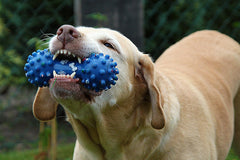
Squirrels are quite fun to watch. They are active and playful. If you hear squeaking around your yard, you should check it out. There might be a baby squirrel.
If you do find a baby squirrel, watch it for a bit. If a mother doesn’t come around, you might need to save that squirrel. You could try calling a wildlife sanctuary. However, if that isn’t an option, there are some newborn squirrel care tips you should be aware of.
Identifying the Squirrel’s Age

One of the first things that you need to know is that baby squirrels aren’t able to take care of themselves until after they are 12 weeks of age. Up until that point, they will need a lot of care. There are some ways that you can determine the age of the baby squirrel you found.
- Newborn - 1 week old: The squirrel’s body will be pink. They won’t have any fur. Their eyes will be closed and they will be about 3 inches in length (not counting their tail). If you found an American red squirrel, it would have a darker stripe on its snout.
- 2 weeks old: The squirrel will have some fur on its back. However, there won’t be hair on its underside. The squirrel’s eyes will be closed.
- 3 weeks old: The squirrel will be around 4 inches in length (not counting its tail). The lower, front teeth will be coming in. Its eyes will be closed still.
- 4 weeks old: The squirrel will be around 5 inches in length (not counting its tail). It will now have fur on its underside. The squirrel’s eyes will be open.
- 5 weeks old: The squirrel will be around 6 inches in length (not counting its tail). The front, top teeth will be coming in.
- 6 weeks old: The squirrel will develop its back teeth. It will be able to sit up by itself. The squirrel will be able to hold some food in its paws.
- 7-8 weeks old: The squirrel will be around 7 to 8 inches in length (not counting its tail). It will have fur all over its body and it will be more active, as well.
- 8-12 weeks old: The squirrel will start learning how to climb. It won’t be as big as an adult squirrel, but it can live outside safely.
Now you know more about how to identify the squirrel’s age. You should also learn more about taking care of a baby squirrel.
Starting Care Tips for Bathing and Injuries

If you do find a newborn squirrel, it is important to know how to properly care for it. There are some tips that can help you to safely care for a baby squirrel. Some of these tips include the following:
- You can put the baby squirrel in a small bucket filled with warm water. Then, use a soft cloth to gently caress its face.
- If the squirrel won’t move its head, the spine or neck could be injured.
- You should squeeze its tail and paws lightly. If the squirrel pulls away, it might be injured.
- If there are no apparent injuries, you can wash the rest of the squirrel’s body gently.
- You will need to stimulate the squirrel’s anus and genitals to help them go to the bathroom (they won’t be able to do this on their own for a while).
After you have done the primary care for the newborn squirrel, you will need to know how to keep the squirrel warm.
Keeping the Baby Squirrel Warm

It is important to know that baby squirrels can’t regulate their own temperature until they are older. Some of the tips for keeping the newborn squirrel warm include the following:
- Put the squirrel in a box (you can make a bed out of blankets to put in the box).
- Cover the squirrel up (even over its head).
- Set the box on top of a heating pad or near a heater.
- Look in on the squirrel every 15 minutes.
- If you found multiple baby squirrels, make sure they are in the same box together (this way they can share each other’s heat).
In addition to keeping the baby squirrel warm, you will need to properly rehydrate the squirrel.
Rehydrating the Squirrel

It is very important that the baby squirrel is rehydrated the first day you have it in your care. Some of the best tips for proper rehydration include the following:
- Use Pedialyte and give it to the squirrel with a syringe.
- Push the Pedialyte slowly into the squirrel’s mouth.
- Hold the squirrel upright to ensure it doesn’t choke on the Pedialyte.
- Remember, making the squirrel drink more than it wants can cause aspiration.
You will also need to make sure the squirrel is eating properly.
Feeding the Newborn Squirrel
You will also need to make sure the baby squirrel is eating. Some of the tips for feeding a newborn squirrel include the following:
- Use a feeding bottle (with a longer nipple) to give the squirrel the Pedialyte.
- Make sure the Pedialyte is warm (not too hot or too cold)
- After the squirrel is used to that you can give them puppy milk
- Feed the squirrel every 2 to 4 hours.
As long as you follow these feeding tips, the squirrel should start gaining weight.
Conclusion
There are many tips for taking care of a baby squirrel. As long as you follow this guide, you should be able to help a baby squirrel get healthy enough to release it back into the wild.
What do baby squirrels eat?
Can you have a squirrel as a pet?
How to care for a baby squirrel?
Check out our blog and follow me on LinkedIn to stay up-to-date!




